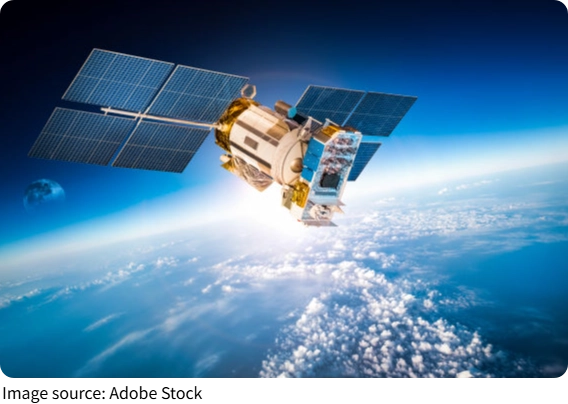Experiments in Microgravity

Imagine floating in space, with nothing but the vast expanse of stars around you.
While most of us would be busy staring in awe, scientists aboard the International Space Station (ISS) are conducting groundbreaking experiments that would be impossible on Earth.
The lack of gravity in space—also known as microgravity—creates an environment where materials and phenomena behave completely differently. But why is this so important for scientific research? Let's explore the exciting world of microgravity experiments and what they can teach us about everything from materials to medicine.
1. What is Microgravity?
Before diving into the experiments themselves, it's essential to understand what microgravity really means. In simple terms, microgravity refers to a state where objects appear to be weightless. This doesn't mean that gravity is completely absent, but rather, it's significantly weaker than on Earth.
Astronauts aboard the ISS experience microgravity because they are in a continuous free-fall towards Earth. As a result, they don't feel the pull of gravity in the usual way. This unique environment allows scientists to study how materials behave when there is no gravity to influence them.
Example: If you've ever seen a video of astronauts floating in the ISS, you've witnessed microgravity in action. Liquids behave like blobs, and objects float freely. This is the "weightlessness" that allows scientists to explore new aspects of science.
2. How Microgravity Affects Materials
One of the most significant aspects of microgravity is how it alters the behavior of materials. Without gravity, fluids don't settle at the bottom of containers, and solids can crystallize in ways that wouldn't be possible on Earth. This has far-reaching implications for industries like pharmaceuticals, manufacturing, and materials science.
For example, in space, scientists have studied how metals and alloys form without the pull of gravity. On Earth, molten metals naturally separate into layers, but in space, these materials remain homogenous. This gives researchers a chance to create stronger, more durable alloys.
Example: NASA's research on microgravity-based alloy formation has led to the development of advanced materials used in everything from aircraft to spacecraft, showing how space science can impact everyday life.
3. Microgravity and Fluid Dynamics
On Earth, gravity pulls fluids downward, causing them to behave in predictable ways. However, in microgravity, fluids act differently. For instance, when you try to pour water in space, it forms floating globules instead of cascading into a cup. Understanding these behaviors is essential for both life support systems and industrial processes in space.
For instance, when fluids are mixed in a microgravity environment, they can remain suspended indefinitely. This gives scientists the opportunity to study fluid dynamics and how various liquids interact with each other without gravity interfering.
Example: During NASA's microgravity experiments, scientists discovered that fluids mix more thoroughly and efficiently without gravity, which has applications in medicine for drug delivery systems or in industries requiring precise liquid handling.
4. Medical Research in Microgravity
The microgravity environment has opened up new frontiers in medical research. It allows scientists to observe how the human body responds to long-term weightlessness. The absence of gravity has significant effects on muscles, bones, and even cells.
For example, astronauts experience muscle atrophy and skeletal loss after extended periods in space. Research in microgravity helps scientists understand the processes behind these changes, leading to advancements in medical treatments for conditions like osteoporosis and muscle-wasting diseases.
Example: Scientists have used microgravity to study the growth of cancer cells. In space, cancer cells behave differently, which could lead to new insights into how tumors grow and how they might be treated on Earth.
According to Dr. Brian C. Dyer, a prominent researcher in cancer biology at the University of Colorado, "The unique conditions of microgravity allow us to observe cellular behaviors that we cannot replicate on Earth. These insights could significantly advance our understanding of tumor progression and treatment."
5. Microgravity and Combustion
Another fascinating area of research involves combustion. On Earth, flames always rise because hot air is lighter than cooler air, creating the upward motion we associate with fire. In microgravity, however, there's no buoyancy, so flames behave in a more spherical shape. Studying combustion in microgravity is essential for understanding how fires might behave in space and how we can control them.
Example: NASA has conducted experiments where researchers observed the combustion of gases in space. The results have led to improved fire safety protocols in space missions and new insights into efficient combustion for cleaner energy on Earth.
6. Future of Microgravity Research
As space exploration continues to evolve, the opportunities for microgravity research only grow. Space tourism, asteroid mining, and long-term missions to Mars all promise to provide new challenges and questions about how materials, fluids, and biological systems behave without the force of gravity.
With the development of private space companies and increasing international collaboration, it's likely that we will see more experiments conducted in microgravity, leading to breakthroughs in a variety of fields, from materials engineering to medicine.
Example: Recently, the development of new drugs in space—tested under microgravity conditions—has shown promise for diseases that were previously hard to treat on Earth. This could revolutionize how we approach healthcare in the future.

7. Why Microgravity Research Matters
While it may seem like research in space is distant or disconnected from everyday life, the truth is that microgravity experiments have far-reaching implications for industries on Earth. Understanding how materials behave in weightlessness, how our bodies adapt to space, and how biological processes unfold can lead to technological and medical breakthroughs that improve life here on Earth.
For example: Microgravity research has already led to new treatments in drug delivery systems and advancements in manufacturing, with the potential to unlock entirely new solutions for challenges we face on Earth.
Microgravity might seem like an odd setting for scientific experiments, but the discoveries made in this unique environment have the potential to change everything—from medicine to materials science. As space exploration continues to push boundaries, the research conducted in weightless environments will help us tackle some of the most pressing challenges facing humanity. Whether it's making medicines more effective or designing the next generation of spacecraft, the lessons we learn from microgravity will continue to shape our world for years to come.

 · Astronomy Team
· Astronomy Team